Dave Hunter: Tone in a Box Part 2 – Tone Tweaking Via Speaker Swapping
by Dave Hunter
A quick speaker swap can yield one of the most dramatic sonic refreshes achievable with any rig. It stands to reason, then, that tailoring your speakers to suit your tonal needs can be a highly rewarding means of dialing in the most expressive, dynamic, and genre-appropriate sounds for your music. It’s often said that the amplifier accounts for at least 50% of the sound of any guitar rig; those who really know their amps will tell you that the speakers and the cabinet they’re mounted in are responsible for a good half of that part of the equation, and that you can’t really get your rig sounding just right for you without putting some thought into the performance and characteristics of these seemingly simple devices.
One of the quickest ways to discover any speaker’s impact on the entire signal chain—from pick plucking string to amplified soundwaves hitting the air—is to swap amps and speakers against type, mixing and matching a few rigs you’re familiar with. For example, swap the two Celestion Alnico Blues paired with your Vox-voiced amp or model for the quad of Celestion G12M Greenbacks normally paired with a Plexi, or swap out the four 10″ Jensen P10Rs that complement your tweed Bassman for the single EVM 12L your Boogie Mark IIC+ roars through and you’ll likely think you’re playing an entirely different amp.
At times, such mismatches might make it difficult to achieve the expected tones from the amps on the other side of the speakers, but on occasion they can provide the ideal adjustment to help your sound sit perfectly in a mix, or in the live environment. In the analog world you need to account for amp output and speaker input impedances and power handling ratings and follow the manufacturer’s instructions on these to avoid causing any damage—but the exercise is still often doable. In the digital world, however, you can taste test these things at will without the least concern.
Whether you’re swapping physical speakers to suit your sound and playing style or applying the same variables as an icing-on-the-cake parameter in your Helix rig, it pays dividends to learn in advance what many of the classic vintage and modern speaker types will do for your tone. Let’s examine some of the main archetypes to discover what they contribute, and after discussing several speaker types we’ll also touch on the part played by the cabinets they are commonly mounted in (covered more fully in Tone in a Box Part 1 – Tone Tweaking Via Cab Swapping).
The folks at Rivera Amplification compare 15 guitar speakers.
Low-Powered and Vintage-Style Speakers
As with amplifiers themselves, the trend toward speakers capable of handling higher and higher output levels has generally tended to be chronological. So, somewhat related to this, one of the easiest (though not the only) delineating points between vintage and modern speakers is power handling capability.
In the 1940s, ’50s, and early ’60s, guitar amps typically carried speakers rated between 15 and 30 watts, although a few rare exceptions existed. Indeed, earlier guitar amps themselves rarely put out much more than the upper of these ratings, until the arrival of the “high powered” 80-watt Fender Twin of the late 1950s and others that followed. These speakers of the ’50s and early ’60s were fine used singly in lower-powered combos suitable for small venues or recording studios, or in multi-speaker cabs at dance-hall volumes. Push them hard, however, and they started to “break up,” in sonic terms, adding a degree of speaker distortion to the amp’s own distortion when played near the peak of their operating capacity.
As guitarists found themselves in bigger and bigger venues, requiring higher clean volume levels, amp makers sought out more robust speaker designs. Those they found, however, cost more than the lower-rated drivers, so even when available they weren’t universally employed. And that’s probably a good thing. A lot of players who weren’t seeking absolute “clean clean” tones enjoyed the added grit, bite, edge, and compression that a touch of speaker distortion adds to the sonic brew. Lower-powered speakers, therefore, with all their gorgeous inherent “flaws,” became a big part of rock ’n’ roll and blues tones, and have been sought out for these characteristics ever since. (Please note that when discussing “vintage” speakers here, I’m also referring to many of the newer makes that seek to re-create similar specifications, sounds, and performance.)
American Vintage
Jensen was the big name in speakers in the United States in the 1950s and early ’60s, and several of the company’s seminal Alnico designs account for our concept of the “American sound” from that era. Jensen’s P10R and P12R (15-watt Alnico speakers, 10″ and 12″ respectively), P10Q and P12Q (20-watt), P12N (30-watt) and a few others played a big part in the signature sounds of great American-made ’50s amps from Fender, Gibson, Ampeg, Magnatone, Premier, Supro/Valco, Silvertone, Danelectro and others. Their respective ceramic-magnet descendants—which carried a “C” prefix in place of the “P”—were likewise the voice of many ’60s classics.
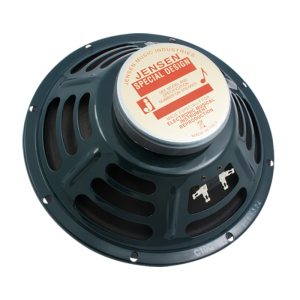
Each of these models has its own distinct personality, but they broadly share some common characteristics. These include bell-like highs, and woody, sometimes papery, mids that exhibit good clarity with cleaner amp settings and a raspier, grittier voice when pushed harder. They also produce relatively soft, saturated lows—to the point of flapping, farting, and all-out low-frequency freak out in the lower-rated units when driven hard. The classic Jensen R, Q, and N models also tend to deliver a little more clarity and punch and relatively firmer low end as you run up the alphabet, which also comes with higher power-handling capabilities (another way of looking at it might be to say that the C12N, for example, is the more modern sounding of the classic vintage Americans). But whatever adjectives we apply to them, in general these performance properties combine to yield sweet, tactile clean sounds when driven a little, and gorgeous, rich, chewy overdrive when driven a lot.
As Jensen speakers became more costly or harder to acquire in quantity moving into the mid ’60s, many of the same amp manufacturers also used speakers from Utah, Oxford, CTS, and others, which usually shared some of the vintage Jensens’ properties, but are generally not as revered by players. The original Jensen company has long been out of business, but Recoton of Italy manufactures a Jensen Vintage range based on the most popular alnico and ceramic models of the ’50s and ’60s. These capture at least some of the originals’ tonal characteristics, although materials are not 100% precise matches between the new and old units. Major American manufacturer Eminence, which evolved out of the CTS company, also makes a number of vintage-American-voiced drivers, many of which are adapted to higher power-handling requirements, and other smaller makers have followed suit.
The archetypal cabinet into which these American vintage speakers of the ’50s and ’60s were mounted was the open-back cab made from solid, finger-jointed pine, as featured in most Fender and Gibson combos of the era, and this also played a part in the overall sonic signatures of these setups. Some of the larger piggyback amps introduced in the early ’60s did have extension cabs with a closed-back configuration, though, and we’ll touch on both of these later.
British Vintage

In England, Elac, Goodmands, and Celestion were manufacturing speakers in the 1950s that had broadly similar characteristics to their American cousins, though often to quite different sonic effect. These generally used pulp paper cones, paper voice-coil formers, and Alnico ring magnets to achieve power handling conservatively rated in the 12- to 20-watt ballpark, as most famously presented by the Goodmans Audiom 60 and, more famously, the Vox Blue, a Celestion G12 relabeled by the amp manufacturer. The Celestion, still available today in an excellent reissue in the form of the Alnico Blue, is famous for its sweet, rich, and musical mids and appealing highs, coupled with a slightly rounded low-end response, plus excellent detail enhanced by sweetly accentuated harmonic overtones, and plenty of aggression when pushed.
The “Blue” has always been a highly efficient speaker, too, which is to say it translates a relatively higher proportion of the wattage pumped into it into volume than did many of its American counterparts of the day. The G12 has a sensitivity rating of 100dB (measured at one watt, from a distance of one meter), compared to figures of 90dB to around 97dB for similarly styled vintage Jensen speakers and many others.
This heightened sensitivity means, for example, that a pair in a 2×12″ Vox AC30 combo cabinet can produce a lot of sound from the amp’s 30-plus-watt output, even making it sound as loud as a 50- or even 100-watt amp with less efficient speakers. Higher efficiency might sound like a good thing, and for some players it is—but louder isn’t always better, and in some circumstances, you might want to tame a little volume in the name of dynamics and easy break up, or to suit your overall decibel production to the limitations of a given studio or venue.

In the mid 1960s Celestion evolved its cornerstone guitar driver into the ceramic-magnet G12M “Greenback” (rated 20 to 25 watts). Typically found in multiples of four inside the archetypal closed-back Marshall cabs, these helped to set the early standard for the rock guitar “amp stack” sound. The Greenback is warm, gritty, and edgy, with a bottom that isn’t particularly firm, but which can still pack plenty of oomph when doing its thing in groups of four or eight in a closed-back cab or two. This speaker, as much as any amplifier, typifies the “British sound” sought by so many classic rock and blues-rock players: at the edge of breakup, it’s warm and crisp, with enough “fur” around it to enhance the midrange body; at full overdrive it’s juicy, thick, and thumping, with sizzle in the highs contributing a creamy liquidity to lead lines.
In the late ’60s the slightly higher-rated G12H took on a heavier magnet and a more efficient design to offer a bigger, tighter low end, enhanced articulation in the highs, and a little more volume and punch overall. Celestion today produces two variations of the G12M Greenback and G12H, one each in the British-made Heritage Series and Chinese-made Classic range, as well as several other speakers based on these archetypes. Eminence covers both sides of the Atlantic by also offering a wide range of Brit-voiced drivers in its Red Coat line, and makers like Fane, Scumback, Weber, WGS, and others also work to fulfil the demand for these classic British-voiced speakers.
Johan Segeborn compares the five most recorded guitar speakers.
Modern or High-Powered Speakers
The evolution of bigger, more powerful guitar amps to suit the demands of the larger and larger venues that rock and pop bands were playing in the 1960s and into the ’70s also necessitated a supply of speakers built to handle the increased wattage. Along with any design changes aimed at enabling great power-handling capabilities, however, came parallel changes in the sound and performance of the newer generation of speakers. We can broadly characterize “modern” speakers not only as being able to take more of a beating wattage-wise, but also as having a tighter, clearer voice, which is usually accompanied by firmer lows than the typical vintage speaker offers and often a little less coloration throughout their entire frequency range.
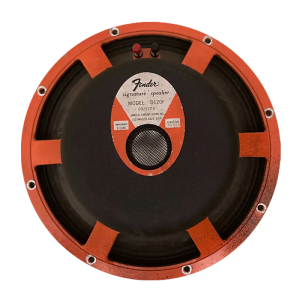
The arrival of the “modern speaker” in the United States arguably came when the vintage speakers discussed above were still very much the norm. During the R&D efforts to suit the powerful new Showman amps to the high-decibel demands of early ’60s surf guitar sensation Dick Dale, Fender sought out a sturdy, efficient driver, and came up with the JBL D120F and D130F (12″ and 15″ speakers respectively). Based on the JBL D120 and D130 models used in the hi-fi audio industry—with “F” added to denote Fender OEM units—these speakers had enormous Alnico magnets, sturdy cast-metal frames, large voice coils and, as a result, power-handling capabilities like nearly nothing else available in the world of guitar amps.
They succeeded in making Showmans incredibly loud amps, and when added as an option to Twin Reverb combos a few years later, also helped to make these amps both unfathomably loud and excruciatingly heavy. JBLs classically present firm lows, a rounded midrange with an edge of bark and slightly nasal honk, and ringing, occasionally piercing highs. They have become a classic speaker to use when you need to play loud, and really want to cut through.
Two other makers of advanced, modern-styled American speakers, Electro-Voice (EV) and Altec, started popping up in guitar amps in the 1960s. Among the earlier EVs used for guitar was the SRO with its huge Alnico “coffee can” magnet and heavy cast frame, a unit considered by some players to be among the best-sounding guitar speakers of all time. More commonly seen, and still very much available on the market both used and new, is the EVM-12L. This ceramic-magnet speaker with cast frame was often paired with Mesa/Boogie Mark Series amps and other big American rock amps of the ’70s, ’80s, and ’90s. Rated at 200 watts, it is famed for its ability to stand up to incredible punishment and keep pumping out pristine clean tones and rich, detailed overdrive (a Zack Wylde signature Black Label EVM-12L currently available is rated at a mighty 300 watts).
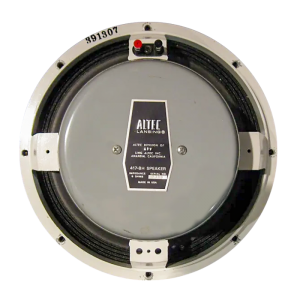
Altec’s most popular rock speaker was the 417-8H, no longer available. These were also optional equipment in Mesa/Boogie amps and a key ingredient in the mid-period Santana tone, as well as being favored by the likes of Randy Rhodes and other big stadium rockers. These 100-watt drivers are known for their powerful, full-throated clean tones and their ability to translate cranked-amp overdrive tones with a minimum of speaker distortion, all of which makes them another contender for “best rock speaker ever” in the eyes—and ears—of some players.
Many big names in vintage speakers survived to produce designs that fit more easily into the modern category. Celestion, for example, also offers the much-loved G12-65, G12T-75, Vintage 30, G12H-100, Classic Lead 80, and others, all powerful rock drivers with big voices and serious power-handling capabilities—although some of these, the G12-65 in particular, still make a sonic nod to the original Greenback.
Meanwhile, many latter-day speakers blur the lines between vintage and modern; Eminence carries robust speakers in its Legend, Patriot, Red Coat, and Signature ranges that have impressive power-handling specs, but achieve tones that fall more into the vintage-voicing camp. Look to the Legend V128 (120 watts), Swamp Thang (150 watts), Man O War (120 watts), or Copperhead (a 75-watt 10″) for examples of what we might call “modernized-vintage” tones, while the CV-75 and DV-77 give a robust modern-rock twist to the original English-made Vintage 30 template.
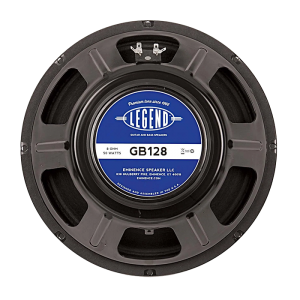
Even one of Celestion’s most popular speakers of the past couple of decades, the Vintage 30, was developed in an effort to capture the vintage-styled British tones of an AC30 in a more contemporary package that’s able to handle 60 watts, and by playing against type it has become a longstanding favorite of many heavier rock players as a result. Similarly, several Celestions released over the past decade or so aim to deliver modern performance capabilities with a semblance of vintage-inspired tone. The Alnico Ruby, Gold, and Cream take the Blue’s 15-watt power handling up to 30, 50, and 90 watts respectively, while the ceramic G12M-65 and G12H-75 Creambacks can tackle 65 watts and 75 watts. Another British manufacturer, the oft-overlooked Fane (whose speakers powered many a Hiwatt in the late 1960s and ’70s), still manufactures a range of robust and great-sounding Alnico and ceramic-magnet speakers to suit both higher and lower power-handling needs.
In the physical world, extensive speaker swapping can obviously become costly and also requires some basic DIY skills—but it can still pay dividends in dialing in your sound. In the digital realm, on the other hand, Helix makes it a breeze, yielding an even easier and more immediate means of crafting your ultimate sonic expression.
Read Dave Hunter: Tone in a Box Part 1 – Tone Tweaking Via Cab Swapping
Main image collage: Alex Lagault

Dave Hunter is the author of The Guitar Amp Handbook, British Amp Invasion, The Gibson Les Paul, Fender 75 Years, and several other books, and is a regular contributor to Guitar Player, Vintage Guitar, and The Guitar Magazine (UK).
Related posts
Leave a Reply
You must be logged in to post a comment.


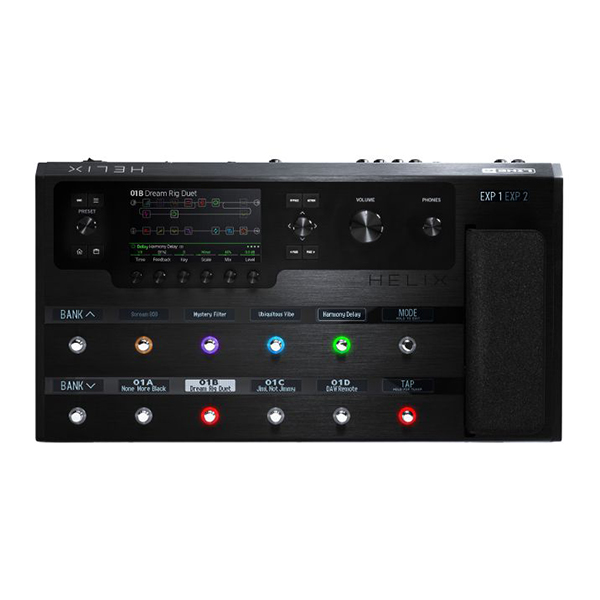

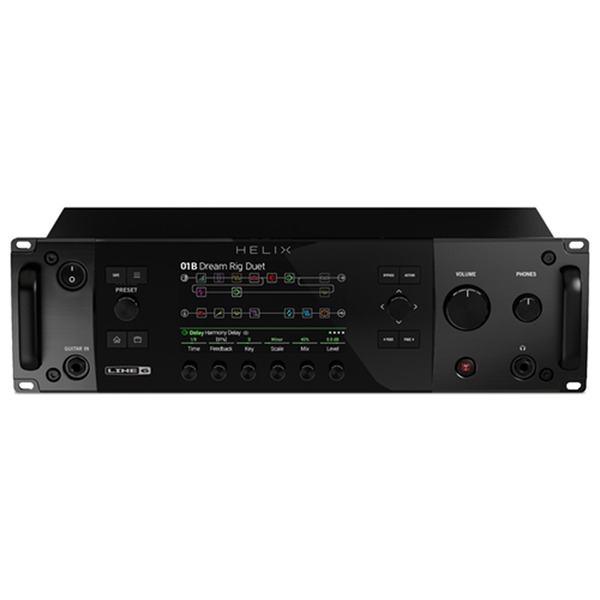
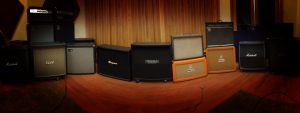
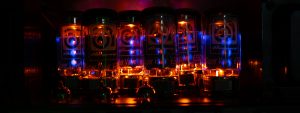
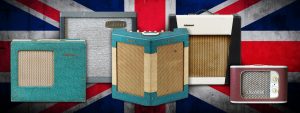
Dave Hunter’s “Tone in a Box Part 2” blog provides insightful tips on optimizing guitar tones by experimenting with speaker swapping. His expertise shines through as he explores the nuances of tone, making it a must-read for any guitarist seeking to elevate their sound.